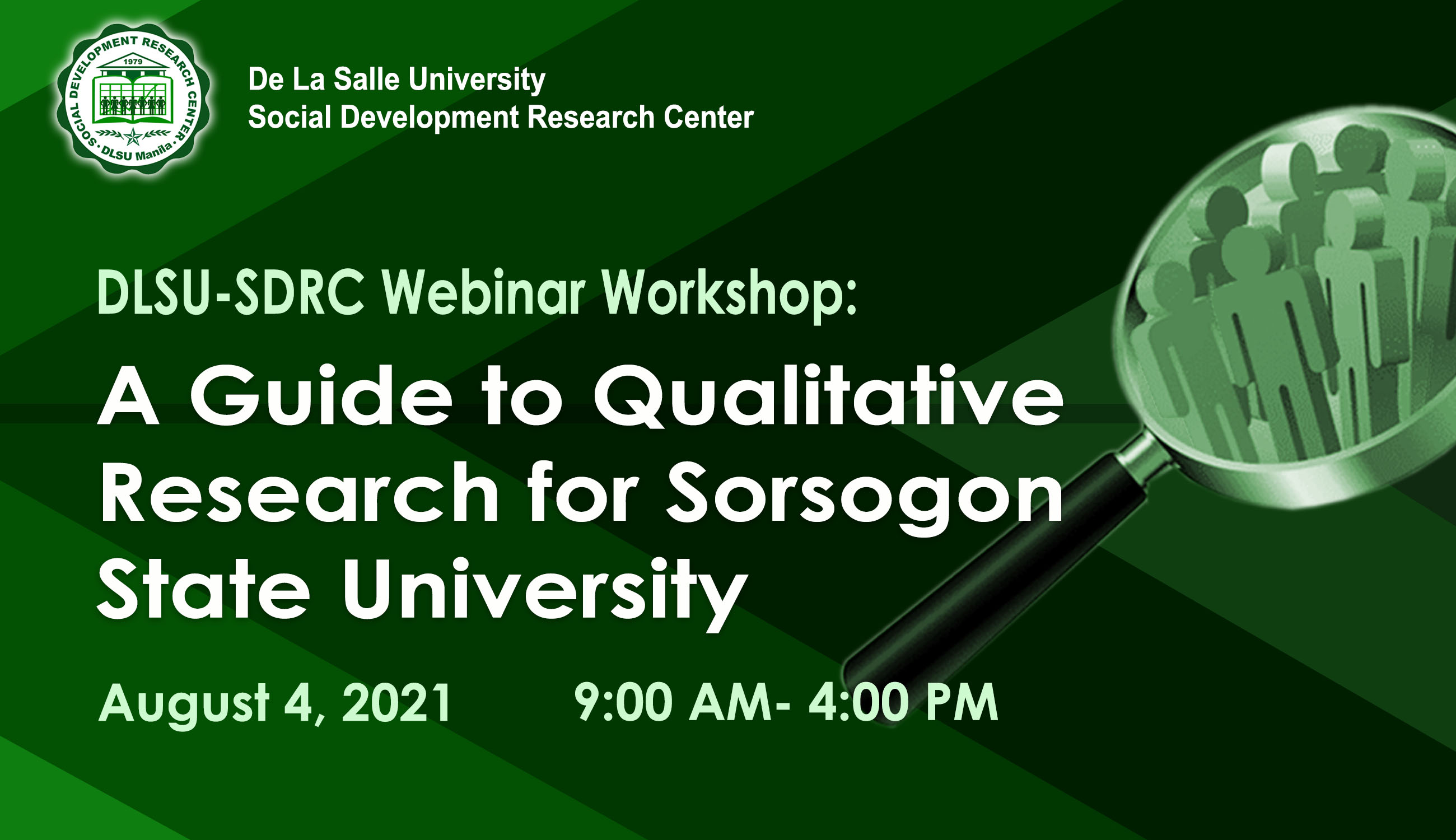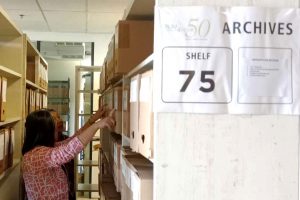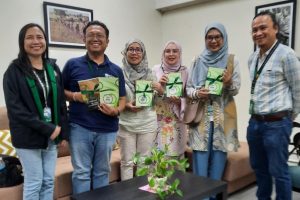“Why Qualitative Research?” SDRC Shares Answers with Sorsogon State University
Forging on in its efforts to navigate the New Normal, the Social Development Research Center conducted the second in its virtual webinar workshops for provincial state universities and colleges on August 4, 2021 with “A Guide to Qualitative Research for Sorsogon State University.” The event conducted via Zoom was participated in by over 50 members of the SSU faculty led by its president Dr. Helen Rosas Lara. Through the webinar workshop, the Center hoped to contribute toward Dr. Lara’s development goals of valuing research, extension and production toward the success of the University and the community.
 The day-long event was divided into a morning session focusing on the principles of qualitative research and an afternoon session providing an overview on the use of the NVivo software for data analysis. SDRC Director Dr. Melvin Jabar opened the webinar by explaining that it was part of a social engagement program conceptualized prior to the pandemic to offer capacity building training on qualitative research to social science faculty in 12 SUCs across the Philippines.
The day-long event was divided into a morning session focusing on the principles of qualitative research and an afternoon session providing an overview on the use of the NVivo software for data analysis. SDRC Director Dr. Melvin Jabar opened the webinar by explaining that it was part of a social engagement program conceptualized prior to the pandemic to offer capacity building training on qualitative research to social science faculty in 12 SUCs across the Philippines.
He proceeded with his presentation after asking participants what they think of when they hear the term “qualitative research” and whether they had ever conducted such studies. Among the basic principles he discussed were the aspects of qualitative research, what to consider when selecting participants, the characteristics and process of data collection, how to maintain control when conducting interviews, threats to the quality of one’s data, evaluating the quality of one’s data, how to get “good” qualitative data results, how resulting research themes are related to research theory, and common contrasts between qualitative and quantitative research.
Before concluding his presentation, Dr. Jabar reminded participants of the goals of qualitative research, which were to elicit meaning (on how people see the world), provide context (on the world in which people act), explain process (on the actions and activities that people engage in), and discuss reasoning (on why people act and behave the way they do).
 In the afternoon, Behavioral Sciences Department Vice-Chair Dr. Crisanto Regadio walked participants through the NVivo software, which he explained enabled users to be more objective and methodical in their data analysis. Faculty were afforded a hands-on experience in creating data files, importing Word files such as transcripts to project files, and doing coding (creating nodes), using an actual study on LGBTQ+ in a Muslim community as an example. Through this exercise he demonstrated that while the software does not do the coding for the researcher, it does help to organize the coding process.
In the afternoon, Behavioral Sciences Department Vice-Chair Dr. Crisanto Regadio walked participants through the NVivo software, which he explained enabled users to be more objective and methodical in their data analysis. Faculty were afforded a hands-on experience in creating data files, importing Word files such as transcripts to project files, and doing coding (creating nodes), using an actual study on LGBTQ+ in a Muslim community as an example. Through this exercise he demonstrated that while the software does not do the coding for the researcher, it does help to organize the coding process.
Through the discussions and in the open forum that followed, participants asked about the use of NVivo (what is the advantage of using the software over manual coding, whether videos can be analyzed using the software, and whether it can transcribe audio recordings of interviews) and about conducting research (how to do data collection during the pandemic when face-to-face interaction is prohibited, how to do data gathering in research involving the elderly, whether journal writing by target informants and responses sent via Facebook Messenger are suitable method for data collection, whether two different methods of data collection can be used, whether there is a general rule regarding the number of informants to determine that data is sufficient, whether GoogleMeet can be used for an FGD with 24 participants divided into two groups, and whether it is better to have an FGD before individual interviews.
Toward the end of the forum, noted historian and SSU associate professor Dr.Stephen Henry Totanes shared how, in a study by Dr. Norman G. Owen on the abaca trade in colonial era Bicol, the use of qualitative and quantitative methods were complimentary. The study’s analysis revealed that whenever abaca prices were high, there was an increased number of weddings and baptisms in Bikolano parishes, indicating that the rise in births and marriages was related to the state of abaca exports. The analysis was cited as an example of how, though uncommon, quantitative data could support qualitative research.





